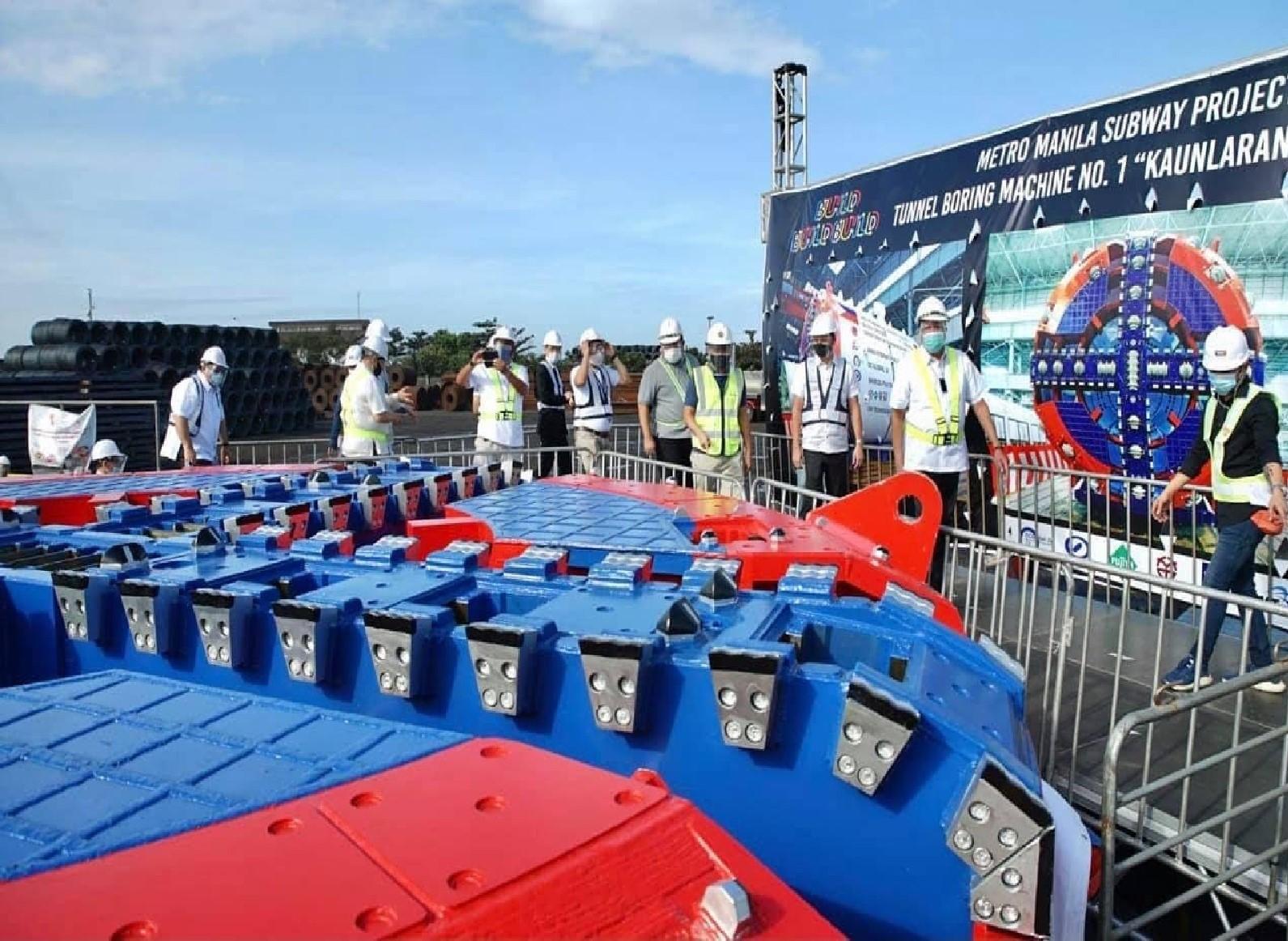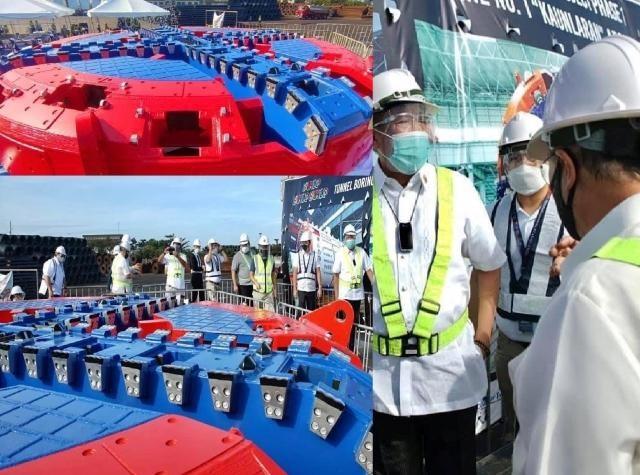DOTr unveils tunnel boring machine's cutter head for NCR subway project

The Department of Transportation on Friday unveiled the cutter head of the first tunnel boring machines (TBM) that will be used for the partial operability section of the National Capital Region's subway project.
According to the DOTr, the partial operability of the subway comprises the first stations in Quezon City and in Valenzuela City, where the line's depot is also located.
In an event, Transportation Secretary Arthur Tugade unveiled the cutter head of the first TBM dubbed “Kaunlaran.”

DOTr said the cutter head is the most substantial part of the TBM, which weighs 74 tons.
Its main purpose is to break, cut and grind rocks and soil by rotating its 36-piece disc cutter, the DOTr added.
“This Tunnel Boring Machine (TBM) symbolizes its name, “KAUNLARAN”. Today, as we applaud the coming of Kaunlaran, I ask you, join us in riding the TBM, and in riding the first Metro Subway because ito ‘ho ay paglakbay papunta sa KAUNLARAN,” Tugade said in his speech.
“Mr. President, the Metro Manila Subway is one of the answers of DOTr in answering your clarion call of making the Filipino life comfortable. This TBM, and the five more that are coming, so that we achieve partial operability by December of this year, is our way of saying this morning: ‘Mr. President, we are committed to make the Filipino life comfortable,” he said.
Transportation Undersecretary for Railway Timothy John Batan said that to further fast-track the rollout of the Metro Manila Subway Project (MMSP), a fleet of 25 Japanes-made TBMs will be utilized.
“To accelerate the construction of the Metro Manila Subway project and to minimize road interference during construction, we will be using not just one but a fleet of 25 Japanese-made Tunnel Boring Machines or (TBMs),” Batan said.
The MMSP is the first underground railway system in the country that will provide the most modern mass transportation in the National Capital Region (NCR), from Valenzuela City to Bicutan, Parañaque, and NAIA Terminal 3 in Pasay, and will further stretch across North and South zones of the Greater Capital Region.
In 2018, Philippine officials signed a ¥104.530-billion (around P51 billion) loan deal with the Japan International Cooperation Committee (JICA) to finance the first phase of the subway project. —LBG, GMA News



